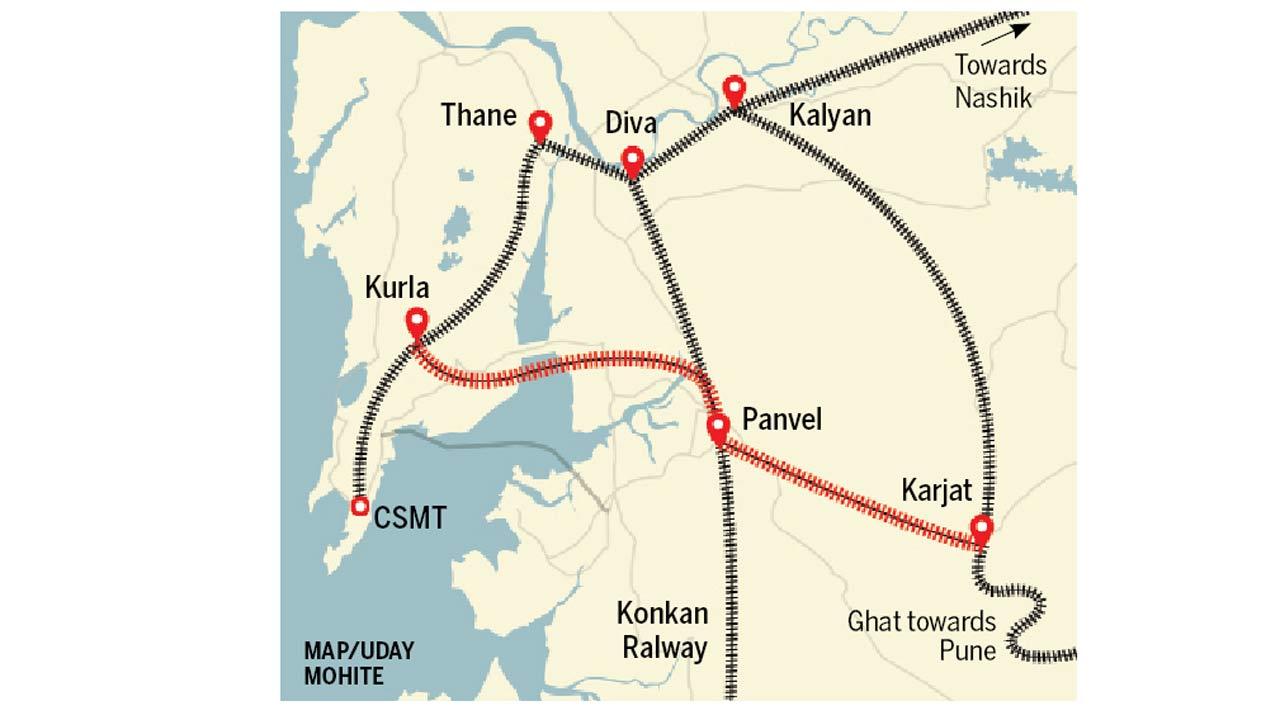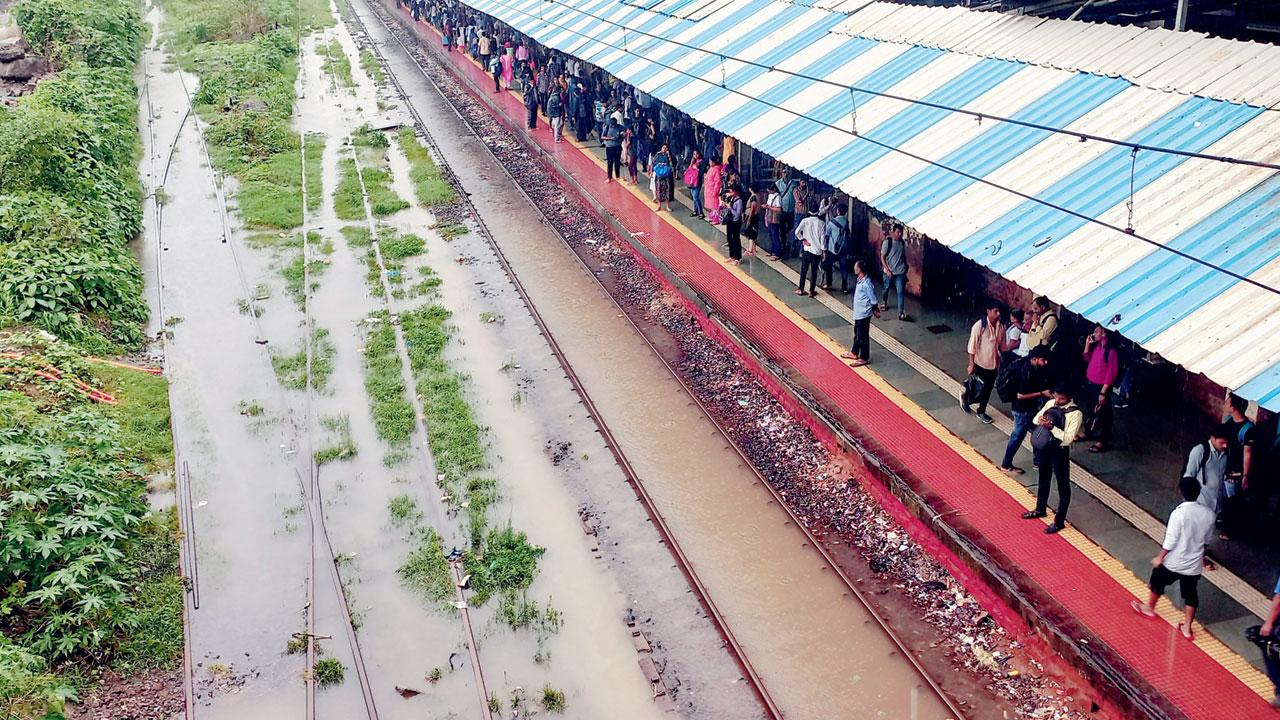As mid-day’s exclusive report about the new Mumbai-Pune alignment stirs a debate, readers add their suggestions, which could make the proposed line even better

Long-distance trains from CSMT go first to either Kalyan or Diva and then turn towards Pune. FILE PIC
Can Mumbai and Pune be connected via a shorter rail route? In response to an exclusive story on how the ministry of railways has sanctioned a new rail alignment between the two metro cities, mid-day has received an overwhelming number of ideas. Professor Farzan Mazda, a reader, suggested building an Atal Setu-like rail bridge across the Thane creek along the harbour line. For the first time in 160 years, a plan for a completely new rail alignment between Mumbai and Pune to bypass the existing steep ghats and 28 tunnels received a go-ahead over the weekend. Calling it the simpler inclines of 1/100 ‘Sreedharan grade’, Railway Minister Ashwini Vaishnaw has asked Central Railway (CR) to work on it expeditiously.
ADVERTISEMENT

Black): The distance between CSMT to Karjat via Kalyan is over 100 km; (Red) Via Kurla and Panvel works out to less than 80 km
Elaborating on his idea, Mazda said, “There is one way to reduce time by at least half an hour which also is far cheaper than working on the ghat section alone. I also intend to write a letter to the railway minister.” “Long-distance trains from Chhatrapati Shivaji Maharaj Terminus (CSMT) go first to either Kalyan or Diva (in the wrong direction) and then turn towards Pune, wasting at least an hour. Alternately, if long-distance trains follow the harbour line route directly cutting off from Kurla to Panvel, the whole roundabout is cut. The Kalyan roundabout was the original British alignment as they couldn’t make long bridges across Bombay Island.
Today, a bridge already exists for the harbour line and if need be, an additional bridge for long-distance trains may be considered. It’s far cheaper than cutting mountains alone. I am suggesting an Atal Setu-like bridge that cuts across the creek,” he added.
‘Need RRTS-like system’
Another reader Chaitanya Pathare agreed with this, calling for services with a maximum speed of at least 250 kmph and tracks akin to those used in the Regional Rapid Transit System (RRTS), a new, dedicated, high-speed, high-capacity, comfortable commuter service connecting regional nodes in the National Capital Region. “The line should pass through Navi Mumbai, Hinjewadi and Wakad before going towards Pune and Kharadi via the airport and have hourly shuttle services,” Pathare said.

Kurla railway station. FILE PIC/SAYYED SAMEER ABEDI
Another reader, Raghunathan T K, also said this was good news and pushed for a similar idea. “High-speed trains should have first been introduced on the Mumbai-Pune route and this would have been a model for intercity transport,” he added. Jagdeep Desai architect, academician, founder trustee and chairperson of Forum for Improving Quality of Life in Mumbai, said, “We can have morning and evening intercity trains, like RRTS, or even EMU (local trains) at half-an-hour intervals in both directions. There’s no need for new tracks. Use that money to clean up the entire railway network tracksides.”
Environmental concerns
Another reader Vishal Khopkar said the new alignment might invite opposition. “They should ideally build a tunnel like the missing link project on the expressway. The route which is being proposed is covered with forests so I’m sure some environmentalists will come and protest this,” he said. Yet another reader Amit Bedi said all major hill stations in India need to be connected via rail as pollution caused by trucks is killing them. “The Railways should plan to build a network connecting hill stations. Not even a single project has been planned, which is taking a big toll on our hill environment due to trucks and cars during the holiday season up north,” he said.
 Subscribe today by clicking the link and stay updated with the latest news!" Click here!
Subscribe today by clicking the link and stay updated with the latest news!" Click here!







